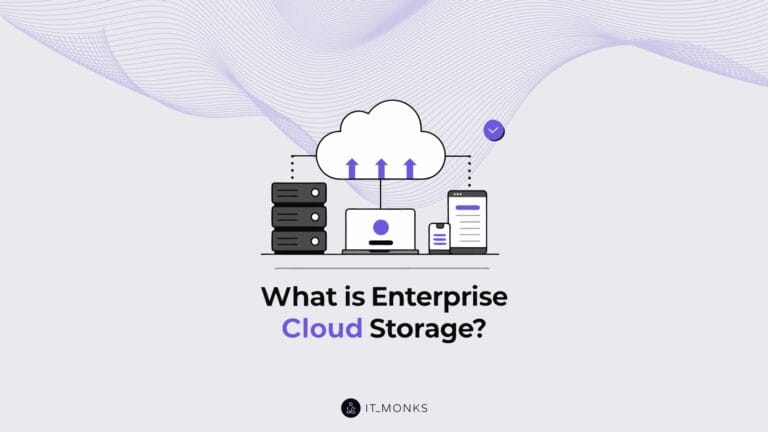Catalog Management in Ecommerce: Best Practices
Table of Contents
Table of Contents

Catalog management in ecommerce systematically organizes and controls the various elements of an online store’s product catalog. When done correctly, it enhances the shopping experience by making it easier for customers to find the products they’re looking for, understand the features and benefits, and make informed purchasing decisions. How to set up a well-managed catalog to improve operational efficiency, reduce errors, and support marketing and sales efforts? Learn in our ecommerce product catalog guide.
What is Catalog Management?
Catalog management in ecommerce is a critical process that involves organizing, maintaining, and presenting product information within an online store. The concept of catalog management in ecommerce extends beyond merely listing products; it also includes categorizing products into logical groups, managing product variations, and maintaining cross-channel consistency.
Online catalog management is crucial for several reasons:
- Enhancing Customer Experience: A well-organized catalog makes it easy for customers to find what they want, understand the product details, and feel confident in their purchase decisions.
- Supporting Marketing and Sales: Accurate and consistent product information is essential for marketing campaigns, promotions, and sales strategies.
- Improving Operational Efficiency: Efficient digital catalog management reduces the time and effort required to update product information, manage inventory, and handle customer inquiries.
- Ensuring Compliance and Accuracy: Compliance with local regulations and standards is critical in ecommerce, especially when dealing with international markets.
Key Components of Ecommerce Catalog Management

Effective online catalog management in ecommerce involves several critical components, each contributing to the overall organization, accuracy, and presentation of product information.
Product Data Management
Product data management is at the core of ecommerce catalog management. It involves meticulously handling all product-related information, including descriptions, specifications, images, and metadata.
- Start with product descriptions if you wonder, “How to optimize product pages?” These should highlight key features, benefits, and unique selling points while also being optimized for search engines to enhance visibility.
- Specifications give customers the technical details they need to make informed purchasing decisions. This might include dimensions, materials, weight, compatibility, and other relevant attributes.
- Images give customers a visual understanding of the product and can significantly influence buying decisions. Multiple images showing different angles, features, and product uses are important.
- Metadata includes keywords, tags, and descriptions that help search engines index products. Properly managed metadata improves the searchability of products within the online store and across the web, driving organic traffic and increasing the chances of conversion.
Category and Taxonomy Management
Category and taxonomy management organizes products into logical, easily navigable groups within the ecommerce product catalog. This structure helps customers quickly find what they’re looking for, improving their shopping experience.
- Products should be grouped into broad categories that make sense for your store’s inventory. For example, in a fashion ecommerce site, categories might include “Men’s Clothing,” “Women’s Clothing,” “Accessories,” etc.
- Within each main category, subcategories can further refine the product selection. Continuing with the fashion example, “Men’s Clothing” might be divided into subcategories like “Shirts,” “Pants,” “Outerwear,” etc.
- Taxonomy refers to the overall classification system used in the catalog, including how categories and subcategories are structured and labeled.
Need a usable web store?
Pricing and Inventory Management
Pricing and inventory management are critical components of catalog management in ecommerce that directly impact profitability and customer satisfaction. Whether you rely on using the best inventory management software for WooCommerce or rely on expert help, be informed that an accurate inventory management procedure involves setting and adjusting prices, managing stock levels, and keeping product availability information up-to-date.
- Setting Prices: Pricing strategies should reflect market conditions, competitor pricing, and customer demand. Reviewing and updating prices regularly is essential to remain competitive while maximizing profit margins.
- Managing Stock Levels: Accurate inventory management is vital to avoid overselling or stockouts. The catalog should always reflect real-time inventory levels, ensuring customers can only purchase available items. This helps maintain customer trust, plan reorders, and manage warehouse space effectively.
- Updating Availability: Product availability must be constantly monitored and updated in the catalog. This includes whether a product is in stock and its expected restock dates, shipping times, and potential delays.
Digital Asset Management (DAM)
Digital Asset Management (DAM) is an essential component of online catalog management that focuses on organizing, storing, and retrieving digital assets like images, videos, and documents.
- Organizing Media Assets: DAM involves creating a structured system where all digital assets are categorized and easily accessible. This might include categorizing assets by product type, season, campaign, or other relevant criteria. Proper organization ensures that the right assets can be quickly retrieved and used as needed.
- Storing Assets: Storing digital assets in a centralized and secure location is critical for ensuring their availability and protection. This includes managing file versions, ensuring that the most up-to-date assets are used in the catalog, and archiving older versions for reference or future use.
- Retrieving and Using Assets: Efficient retrieval of digital assets is key to maintaining consistency and quality in product representation. DAM systems often include search functionality, allowing teams to find and deploy the right assets quickly.
Common Challenges in Ecommerce Catalog Management

While essential for success, catalog management in ecommerce is fraught with challenges that can significantly impact operations efficiency, customer experience, and, ultimately, sales performance. Understanding these challenges is the first step in developing strategies to mitigate them.
Data Inconsistencies
Data inconsistencies are one of the most pervasive challenges in the digital catalog management. Only accurate or updated product information can lead to many issues, from customer dissatisfaction to operational inefficiencies.
- Inaccurate Product Information: Customers need to be clarified about incorrect product descriptions, specifications, prices, or images. For example, suppose a product is listed with incorrect dimensions or features. In that case, customers might receive something different from what they expected, leading to returns, negative reviews, and a loss of trust in the brand.
- Outdated Information: Keeping product data current is crucial, especially in industries where product features or prices change frequently. Outdated information, such as an old price or an out-of-stock product still showing as available, can result in lost sales, increased customer service inquiries, and logistical headaches.
- Data Entry Errors: Manual data entry is often prone to errors, whether it’s a typo in the product description, an incorrect SKU, or a miscategorized item. These errors can disrupt the customer’s shopping experience and make it difficult for internal teams to manage inventory and sales effectively.
Need to keep your store error-free?
Scalability
As an ecommerce business grows, so does the complexity of its catalog. Managing a growing number of products, variants, and categories presents significant scalability challenges.
- Increased Product Variants: As businesses expand their product lines, the number of variants- such as different sizes, colors, and configurations – can multiply. Each variant requires a data set, including descriptions, images, and inventory levels.
- Catalog Expansion: Adding new product categories or entering new markets requires adjustments to the catalog structure.
- System Performance: As the catalog grows, the underlying systems that manage it must be able to handle the increased data load.
Cross-Channel Consistency
It is a significant challenge to ensure consistency across multiple sales channels, such as the company website, mobile app, social media, and marketplaces like Amazon.
- Uniform Product Information: Customers expect to see the same product information regardless of where they interact with the brand. Discrepancies between channels, such as different prices, descriptions, or availability, can confuse customers and erode trust.
- Channel-Specific Requirements: Different sales channels often have unique product data requirements. For example, a marketplace like Amazon may require specific image dimensions, while social media platforms might prioritize short, engaging descriptions.
- Inventory Synchronization: Keeping inventory levels synchronized across all channels is critical to avoid overselling or stockouts. This requires real-time updates and coordination between systems, which can be challenging as the number of channels and products increases.
Localization and Globalization
As ecommerce businesses expand internationally, they must adapt their catalogs to meet the needs and expectations of different regions, languages, and cultures. This presents unique challenges in localization and globalization.
- Language Translation: Products, including descriptions, specifications, and metadata, must be accurately translated into the local language.
- Cultural Adaptation: Beyond language, products may need to be adapted to fit the cultural context of different regions. This could include changes to product names, descriptions, or even the products themselves to better align with local preferences and norms.
- Regulatory Compliance: Different regions have varying product information, labeling, and marketing regulations. Ensuring the catalog complies with these local laws is essential to avoid legal issues, fines, or the removal of products from certain markets.
- Currency and Pricing Adjustments: Managing different currencies and pricing strategies for various regions is another challenge. Prices must be adjusted for currency conversion and to reflect local market conditions, taxes, and shipping costs.
Strategies for Effective Digital Catalog Management

Effective catalog management in ecommerce requires a strategic approach that addresses current challenges and anticipates future needs. Implementing the right strategies can streamline operations, enhance customer experience, and drive business growth.
Centralized Data Repository
One foundational strategy for effective digital catalog management is establishing a centralized data repository. This involves consolidating all product-related data into a single, accessible location.
- Benefits of Centralization: Centralizing product data ensures that all information is consistent and up-to-date across the organization. When data is stored in multiple locations or systems, inconsistencies and errors are more likely to occur.
- Improved Collaboration: With a centralized system, different teams—such as marketing, sales, and inventory management—can access the same data, ensuring everyone is working with the most current and accurate information.
- Enhanced Data Security: Centralizing data also improves security, allowing for better control and monitoring of who has access to sensitive information. It ensures that data is backed up regularly and that there is a clear audit trail for any changes made to the catalog.
- Streamlined Updates: A centralized system makes updating product information much more efficient. Instead of making changes in multiple places, updates can be made once and automatically propagated across all relevant channels and platforms, saving time and reducing the chance of errors.
Automation and AI
Automation and artificial intelligence (AI) are transforming how businesses manage their ecommerce catalog solutions, making processes faster, more accurate, and less labor-intensive.
- Automation tools can significantly speed up catalog information updates. For instance, price changes, inventory updates, and new product launches can be automated, ensuring the ecommerce catalog solution is always current without requiring constant manual input.
- AI can assist in catalog content management.
- Automation reduces the risk of human error in data entry and management.
- AI can also be used for predictive analytics, helping businesses anticipate trends and adjust their catalogs accordingly.
Eager to automate your store?
Regular Data Audits
Conducting regular data audits is a critical strategy for maintaining the accuracy and quality of your ecommerce catalog solution. These audits involve systematically reviewing product data to identify and correct any inconsistencies, errors, or outdated information.
- Regular audits help ensure that all product information is accurate and up-to-date.
- Audits can reveal gaps or missing information in the catalog.
- Regular audits ensure the catalog complies with internal standards and external regulations.
- Businesses can continuously improve their catalogs by regularly reviewing and updating product data.
Use of PIM Systems
Product Information Management (PIM) systems are specialized tools designed to manage product data efficiently and effectively. Implementing a PIM system is a powerful strategy for enhancing catalog management.
A PIM system is a centralized hub for all product-related information, from descriptions and images to pricing and inventory data. It is designed to handle large volumes of data, making it particularly useful for businesses with extensive and complex catalogs. PIM systems integrate with other systems, such as ecommerce platforms, ERP systems, and marketing tools, to streamline data management across the organization.
Best Practices and Tips

Implementing best practices in catalog management is essential for maintaining a well-organized and efficient ecommerce platform. By following these guidelines, businesses can ensure that their ecommerce product catalogs are accurate, up-to-date, and optimized for customer engagement and conversion.
Ensuring Data Consistency
Maintaining accurate and consistent product data is crucial for providing a seamless shopping experience. Consistent or outdated information can lead to customer satisfaction, lost sales, and a damaged reputation. Here are some techniques to ensure data consistency:
- Standardization: Establish clear guidelines and standards for entering and maintaining product data. This includes setting uniform formats for product descriptions, specifications, pricing, and images.
- Centralized Data Management: To store and manage all product-related information, utilize a centralized data management system, such as a Product Information Management (PIM) system.
- Data Validation: Implement data validation rules and checks to ensure that all product data is accurate before publication. This can include automated checks for missing information, incorrect pricing, or mismatched images.
- Regular Audits: Conduct regular audits of the product catalog on your ecommerce store to identify and correct any inconsistencies. Audits should be performed periodically to ensure all product information is current and accurate.
- Training and Documentation: Provide training for employees involved in catalog management to ensure they understand the importance of data consistency and how to achieve it.
Optimizing Product Listings
Optimizing product listings is key to improving customer engagement, enhancing SEO, and ultimately driving sales. Well-optimized listings help customers find what they want and make informed purchasing decisions. Here are some tips for optimizing your product listings:
- Compelling Product Descriptions: Write clear, concise, and compelling descriptions highlighting each product’s key features and benefits. Use language that resonates with your target audience and addresses their needs and pain points. Avoid jargon and focus on how the product can solve a problem or enhance the customer’s life.
- High-Quality Images: Use high-quality images that showcase the product from multiple angles. Images should be clear, well-lit, and accurately represent the product. Consider including zoom functionality or 360-degree views to give customers a better understanding of what they are buying.
- SEO Optimization: Optimize product listings for search engines by incorporating relevant keywords into product titles, descriptions, and metadata. This helps improve your products’ visibility in search engine results, driving more traffic to your e-commerce site. Be mindful of keyword stuffing, which can negatively impact the user experience and SEO rankings.
- Detailed Specifications: Provide detailed product specifications that include all relevant information, such as size, weight, materials, and technical features. This helps customers make informed decisions and reduces the likelihood of returns due to unmet expectations.
- Customer Reviews and Ratings: Encourage customers to leave product reviews and ratings. Positive reviews can boost customer confidence and improve conversion rates. Additionally, reviews often contain relevant keywords that can enhance the SEO performance of product listings.
Seeking expert SEO help?
Managing Seasonal and Promotional Catalogs
Managing seasonal changes and promotional campaigns effectively is crucial for maximizing sales opportunities and ensuring your catalog remains relevant and attractive to customers throughout the year. Here are strategies for efficiently handling these aspects of catalog management:
- Seasonal Planning: Plan seasonal catalog updates well to ensure all necessary changes are made on time. This includes updating product listings, adjusting pricing, and promoting relevant seasonal products. Early planning helps avoid last-minute rushes and ensures a smooth transition between seasons.
- Promotional Campaigns: Create dedicated catalogs for special events, sales, or holidays. These catalogs should feature discounted products, special offers, and limited-time deals. Ensure that promotional catalogs are well-organized and easy for customers to navigate, with clear calls to action that encourage purchases.
- Dynamic Pricing: Implement dynamic pricing strategies that allow for flexible pricing adjustments based on demand, competition, and seasonality. Dynamic pricing can help you maximize profits during peak seasons while remaining competitive during slower periods.
- Inventory Management: Carefully monitor inventory levels during seasonal peaks and promotional campaigns to avoid stockouts or overstock situations. Use data analytics to forecast demand and adjust inventory levels accordingly. Consider implementing automated inventory management tools to help you track stock levels in real time.
- Personalization: Tailor your seasonal and promotional catalogs to specific customer segments using personalized recommendations and offers. Personalization can increase customer engagement and drive higher conversion rates, especially during competitive shopping.
- Post-Campaign Analysis: After each seasonal or promotional campaign, conduct a thorough analysis to assess its performance. Identify what worked well and what could be improved for future campaigns. Use these insights to refine your strategies and optimize your catalog management practices.
Conclusion
A well-managed product catalog in ecommerce is more than just a collection of items—it is a dynamic and strategic asset that plays a critical role in an ecommerce business’s success. Investing in robust catalog management practices can unlock new growth opportunities and ensure your business’s long-term success in the digital marketplace.
If that sounds familiar and you want your online store to achieve new heights, consider relying on expert help! The IT Monks team has over 12 years of experience building and managing e-commerce projects of all types. From wireframing to designing, optimizing, launching, and managing your store, we provide a wide range of ecommerce services, ensuring the results of our work meet your client’s demands and outperform your expectations. Contact us to discuss your project!



